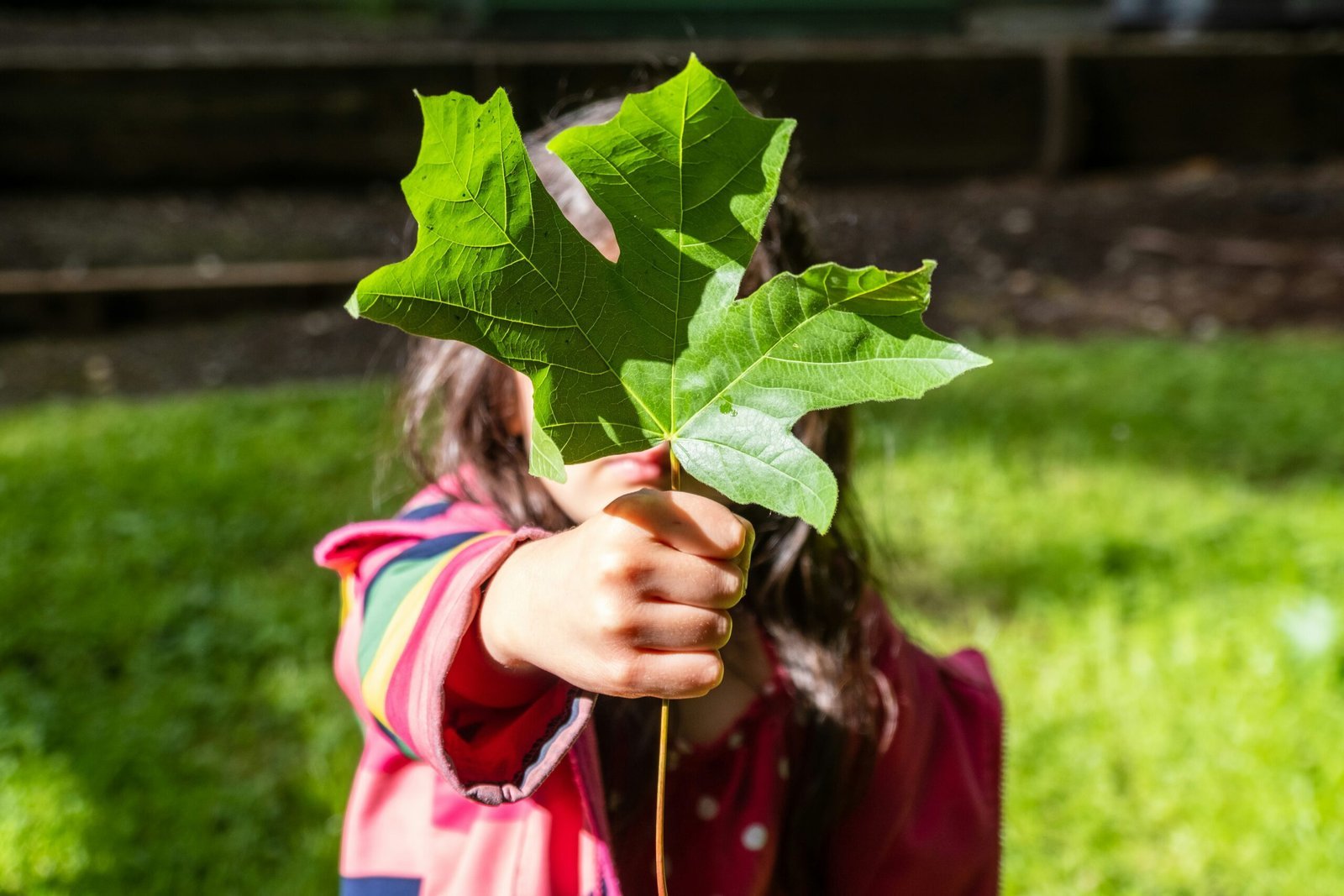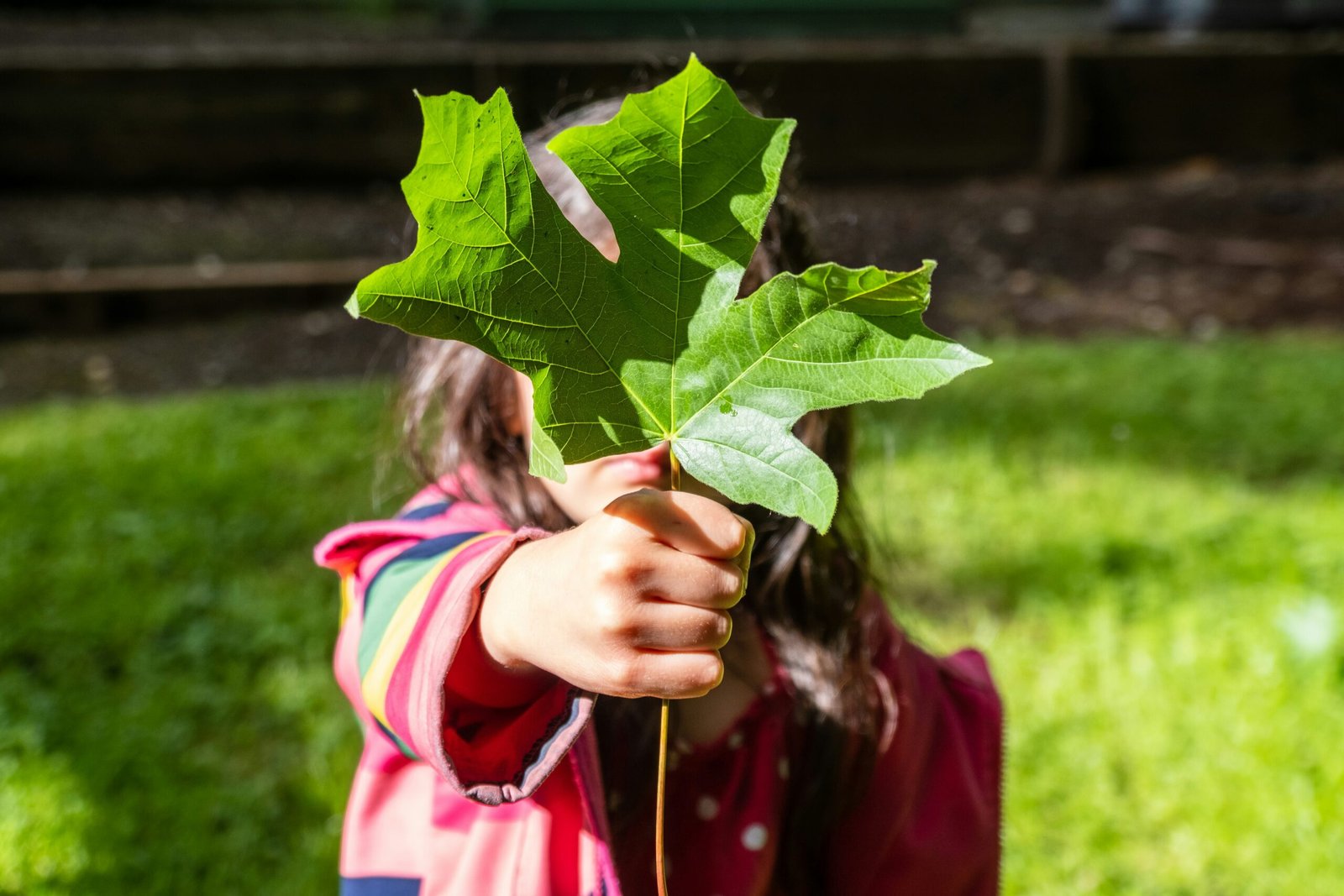
Introduction: Why Environmental Protection Matters
Environmental protection has evolved into a critical concern in today’s world, underscoring the urgent need to address climate change, pollution, and biodiversity loss. These environmental issues are not remote or abstract; they resonate deeply with our daily lives and the well-being of future generations. Climate change, driven by escalating greenhouse gas emissions, is manifesting in more frequent and severe weather events, rising sea levels, and disrupted ecosystems. Pollution, particularly air and water pollution, poses significant health risks, contributing to respiratory diseases, contaminated drinking water, and a degraded quality of life.
Biodiversity loss, accelerated by habitat destruction, overexploitation, and climate change, threatens the delicate balance of ecosystems that sustain life on Earth. The decline in species diversity undermines ecosystem resilience, affecting food security, water supply, and natural processes like pollination and carbon sequestration. The interconnectedness of these issues highlights the necessity for comprehensive and proactive environmental protection measures.
However, addressing these challenges does not have to be a daunting or joyless endeavor. On the contrary, protecting the environment can be both impactful and enjoyable. By embracing sustainable practices and eco-friendly habits, individuals and communities can contribute to a healthier planet while also enriching their own lives. Engaging in activities such as community clean-ups, tree planting, and sustainable living not only fosters a sense of accomplishment but also builds stronger, more connected communities.
Moreover, advancements in technology and innovation offer exciting opportunities to combat environmental issues in creative ways. From renewable energy solutions to sustainable fashion and eco-tourism, there are countless avenues to explore that align with personal interests and passions. By integrating environmental protection into our everyday lives, we can make substantial progress towards a sustainable future while enjoying the journey.
Green Living: Stylish Tips for an Eco-Friendly Lifestyle
Embracing an eco-friendly lifestyle does not mean sacrificing style or convenience. In fact, sustainable living can be both chic and practical. One of the most impactful areas to start with is eco-friendly fashion. Brands like Patagonia, Reformation, and Stella McCartney offer trendy clothing made from sustainable materials, including organic cotton, recycled polyester, and even innovative fabrics like Tencel. When shopping for clothes, look for items labeled as fair trade or those certified by organizations such as the Global Organic Textile Standard (GOTS).
Another area ripe for sustainable transformation is home decor. Opt for furniture made from reclaimed wood or recycled materials, which not only reduces waste but also adds a unique character to your space. Companies like West Elm and IKEA have sustainable lines of products, including rugs made from recycled plastic and energy-efficient lighting. Additionally, incorporating indoor plants not only enhances your home’s aesthetic but also improves air quality.
Green beauty products are gaining popularity for their reduced environmental impact and gentle formulations. Brands like Aveda, Lush, and RMS Beauty offer products made from natural ingredients with minimal packaging. When selecting beauty products, look for labels indicating cruelty-free, vegan, or organic certifications. Moreover, opting for refillable containers can significantly cut down on plastic waste.
Integrating these sustainable choices into your daily life can be straightforward. Start by making a list of the areas you wish to improve and gradually replace conventional items with eco-friendly alternatives. Simplify your wardrobe by investing in timeless, versatile pieces that can be mixed and matched. In your home, choose decor that reflects your personal style while being mindful of its environmental impact. Lastly, build a green beauty routine by selecting products that align with your values.
By making conscious choices in fashion, home decor, and beauty, you can lead a sustainable lifestyle that is both stylish and kind to the planet. Small changes collectively contribute to significant positive impacts on the environment, proving that green living can indeed be hip and happening.
Eco-Travel: Adventures with a Smaller Footprint
Eco-travel, a growing trend among environmentally conscious travelers, emphasizes minimizing the environmental impact of travel while maximizing cultural and natural experiences. Planning an eco-friendly vacation involves several considerations, from choosing sustainable accommodations to supporting local communities and minimizing travel emissions.
When selecting accommodations, opt for eco-friendly hotels, lodges, or homestays that implement sustainable practices. Look for certifications such as LEED, Green Key, or EarthCheck, which indicate a commitment to environmental stewardship. These establishments often use renewable energy, practice water conservation, and reduce waste through recycling and composting programs.
Supporting local communities is another crucial aspect of eco-travel. Prioritize locally-owned businesses, such as restaurants, shops, and tour operators, which ensure that your spending benefits the local economy. Engaging in community-based tourism, where local residents offer guided tours and cultural experiences, not only provides an authentic travel experience but also fosters economic development and cultural preservation.
Minimizing travel emissions is essential for reducing your carbon footprint. Whenever possible, choose direct flights to reduce the overall distance traveled and opt for airlines that invest in carbon offset programs. Additionally, consider alternative transportation methods like trains, buses, or carpooling, which typically have a lower environmental impact than flying. Once at your destination, explore on foot, by bicycle, or using public transportation to further reduce emissions.
Eco-tours offer unique travel experiences that emphasize sustainability and environmental education. Participate in wildlife conservation trips, where you can contribute to the protection of endangered species and their habitats. Explore national parks and nature reserves with guided tours that focus on environmental preservation and responsible tourism practices. Cultural exchanges provide an opportunity to immerse yourself in local traditions and customs while fostering mutual respect and understanding.
By integrating these principles into your travel plans, you can enjoy memorable adventures while preserving the planet for future generations. Eco-travel not only enriches your own experiences but also supports the global movement towards sustainability and environmental protection.
Sustainable Eating: Delicious and Planet-Friendly Choices
Adopting sustainable eating habits not only benefits the environment but also enhances our culinary experiences. A key component is embracing plant-based diets, which significantly reduce carbon footprints. Incorporating more fruits, vegetables, grains, and legumes into meals can be both nutritious and delicious. For instance, a hearty chickpea and vegetable stir-fry can be a satisfying and eco-friendly dinner option.
Locally-sourced foods play a crucial role in sustainable eating. By purchasing produce from local farmers and markets, we reduce the energy required for transportation and support the local economy. Seasonal eating ensures that we consume foods at their peak of freshness, maximizing flavor and nutritional value. A visit to the local farmer’s market can yield a bounty of fresh ingredients for a vibrant summer salad or a comforting root vegetable soup in the winter.
Reducing food waste is another vital aspect of sustainable eating. Planning meals and proper storage can prevent unnecessary waste. Leftovers can be creatively repurposed; for example, yesterday’s roasted vegetables can become today’s delicious frittata. Composting food scraps also returns valuable nutrients to the soil, promoting a healthier ecosystem.
For those looking to embark on a sustainable eating journey, here are some tips:
- Plan meals around seasonal produce to ensure freshness and reduce environmental impact.
- Experiment with plant-based recipes, such as lentil tacos or quinoa bowls, to diversify your diet.
- Support local farmers by shopping at farmer’s markets or joining a community-supported agriculture (CSA) program.
- Be mindful of portion sizes and properly store leftovers to minimize waste.
By making conscious food choices, we can enjoy delicious meals while contributing to a healthier planet. Sustainable eating is not only beneficial for the environment but also a delightful and adventurous way to elevate our culinary experiences.
DIY Projects: Creative and Eco-Conscious Crafts
Engaging in DIY projects that focus on reusing and recycling materials not only helps the environment but also allows for a unique form of creative expression. By transforming everyday household items into useful and decorative objects, you can contribute to environmental protection while exploring your artistic side. The fun of upcycling and repurposing lies in the endless possibilities for innovation and personalization.
One simple and sustainable DIY project is creating planters from old containers. Start with used tin cans, jars, or plastic bottles, and give them a new life as charming plant holders. Clean the containers thoroughly, and if desired, paint or decorate them to match your home décor. Drill or poke small drainage holes at the bottom, fill with soil, and plant your favorite herbs or flowers. This eco-conscious craft not only reduces waste but also adds a touch of greenery to your living space.
Another enjoyable project is turning old clothing into reusable shopping bags. Gather some old t-shirts that you no longer wear and cut off the sleeves and neckline to form the bag’s opening. Stitch or tie the bottom hem together, and you have a functional and stylish tote bag. This project highlights the fun of upcycling by giving worn-out garments a new purpose while reducing the need for single-use plastic bags.
For a decorative touch in your home, consider making a mosaic picture frame using broken tiles, glass, or ceramic pieces. Collect the fragments and arrange them on a wooden or old picture frame. Use a strong adhesive to secure the pieces, and once dry, apply grout to fill the gaps. The result is a stunning and unique frame that showcases your creative talent and commitment to sustainability.
These DIY projects are just a few examples of how you can embrace eco-conscious crafting. By repurposing and upcycling materials, you can reduce waste, save money, and create personalized items that reflect your creativity. The emphasis on sustainability and cost-effectiveness makes these projects not only fun but also meaningful contributions to environmental protection.
Green Tech: Gadgets and Innovations for the Eco-Conscious
In an era where technology increasingly influences our daily lives, green tech emerges as a significant player in environmental protection. The integration of eco-friendly gadgets and innovations not only makes conservation efforts more manageable but also adds an element of fun. For those committed to environmental sustainability, the latest advancements in green technology offer a range of solutions designed to reduce our ecological footprint.
One of the most impactful areas where green technology shines is in smart home devices. These gadgets are engineered to optimize energy consumption, making homes more efficient. For instance, smart thermostats like the Nest Learning Thermostat adapt to your schedule, ensuring that heating and cooling systems operate only when necessary. This not only conserves energy but also lowers utility bills. Similarly, smart lighting systems, such as Philips Hue, allow users to control lighting remotely, automating energy savings and enhancing convenience.
Eco-friendly gadgets extend beyond the home into everyday life. Solar-powered chargers, for example, harness renewable energy to keep our devices running. Brands like Anker and Goal Zero offer portable solar chargers that are perfect for outdoor enthusiasts and frequent travelers. These devices reduce reliance on conventional electricity sources, promoting the use of clean energy.
Innovations in transportation also play a crucial role in reducing environmental impact. Electric vehicles (EVs) have gained widespread popularity, with companies like Tesla and Nissan leading the charge. EVs produce zero tailpipe emissions, significantly lowering greenhouse gases compared to traditional gasoline-powered cars. Additionally, advancements in battery technology and the expansion of charging infrastructure make EVs a viable and sustainable choice for many consumers.
The role of technology in conservation efforts cannot be overstated. From apps that monitor carbon footprints to drones used in wildlife conservation, tech solutions offer new ways to engage with environmental protection. By leveraging these tools, individuals can contribute to conservation efforts more effectively. Whether it’s through reducing energy consumption, adopting renewable energy sources, or making sustainable transportation choices, green tech provides practical and enjoyable ways to make a positive environmental impact.
Community Involvement: Fun Ways to Make a Difference Together
Engaging in community involvement is a fantastic way to contribute to environmental protection while enjoying the company of like-minded individuals. Participating in activities such as community clean-ups, tree planting events, and local conservation projects not only helps the environment but also fosters a sense of camaraderie and collective achievement.
Community clean-ups are an excellent starting point. These events often take place in local parks, beaches, and neighborhoods, where volunteers gather to remove litter and waste. Not only do these efforts enhance the beauty of public spaces, but they also prevent pollution from harming wildlife and waterways. The social aspect of these events cannot be overlooked—working alongside neighbors and friends creates a sense of unity and shared purpose.
Tree planting events are another engaging way to get involved. Trees play a crucial role in improving air quality, providing habitat for wildlife, and combating climate change. Organizing or joining a tree planting event can be a rewarding experience, especially when done as a group. The act of planting trees together can be both educational and enjoyable, offering participants the opportunity to learn about the importance of reforestation and environmental stewardship.
Local conservation projects offer diverse opportunities for community involvement. These projects can range from restoring native habitats to creating community gardens. Participating in such initiatives allows individuals to connect with nature and contribute to the preservation of local ecosystems. The hands-on experience gained through these projects often leads to a deeper appreciation for the environment and a stronger commitment to its protection.
Stories of successful community efforts abound. For example, the “Adopt-a-Highway” programs have led to significant reductions in roadside litter, thanks to the dedication of local volunteers. Similarly, urban community gardens have not only provided fresh produce to residents but have also become social hubs that strengthen community bonds.
By engaging in these fun and impactful activities, individuals can make a significant difference in their communities while enjoying the process. The collective efforts of community members can lead to substantial environmental improvements, demonstrating that protecting the planet can be both rewarding and enjoyable.
Personal Stories: Inspiring Tales of Eco-Heroes
Environmental protection is a cause that draws strength from the collective efforts of individuals who are committed to making a difference. These eco-heroes come from all walks of life and their inspiring stories serve as a testament to the impact that one person can have. By sharing their journeys, challenges, and successes, we aim to motivate our readers to embark on their own paths of environmental stewardship.
One of our notable eco-heroes is Jane Goodall, a renowned primatologist and environmental activist. Her journey began in the forests of Tanzania, where she conducted groundbreaking research on chimpanzees. Over the years, Jane has evolved into a global advocate for environmental conservation, founding the Jane Goodall Institute, which focuses on wildlife conservation and community-centered projects. Her story is a powerful reminder that passion, when combined with perseverance, can lead to significant global impact.
Another inspiring tale comes from Boyan Slat, a young entrepreneur from the Netherlands. Boyan’s concern for oceanic plastic pollution led him to establish The Ocean Cleanup, an innovative project aimed at removing plastic waste from the world’s oceans. Despite facing numerous technical and financial challenges, Boyan’s dedication resulted in the development of advanced clean-up systems that are now being deployed worldwide. His story highlights the importance of innovation and resilience in addressing environmental issues.
We also draw inspiration from the everyday environmental efforts of individuals like Wangari Maathai from Kenya. Wangari, an environmental and political activist, founded the Green Belt Movement, which focuses on tree planting, environmental conservation, and women’s rights. Her grassroots initiative has led to the planting of over 50 million trees, transforming landscapes and empowering communities. Wangari’s journey underscores the power of grassroots movements in driving sustainable change.
These eco-heroes exemplify the diverse ways in which people can contribute to environmental protection. Their stories not only inspire but also demonstrate that anyone, regardless of their background, can make a meaningful difference. Whether through scientific research, innovative solutions, or community activism, each step taken towards environmental protection adds up, leading to a healthier and more sustainable planet for future generations.
Conclusion: Making Environmental Protection a Fun and Integral Part of Life
As we’ve explored throughout this blog, environmental protection doesn’t have to be a daunting task. In fact, integrating eco-friendly practices into your daily life can be both enjoyable and deeply rewarding. By turning sustainable habits into exciting activities, we can collectively contribute to a healthier planet, while experiencing a sense of fulfillment and joy.
From engaging in community clean-up events to embracing eco-friendly travel and adopting a zero-waste lifestyle, there are countless ways to make environmental protection fun. The key lies in finding methods that resonate with your interests and lifestyle. For instance, if you love fashion, consider exploring sustainable clothing brands or even trying your hand at upcycling old garments. If you’re a foodie, diving into plant-based recipes or supporting local farmers’ markets can be both delicious and sustainable.
Moreover, technology and social media offer innovative platforms to spread awareness and inspire others. Sharing your green journey on social media can not only raise awareness but also build a community of like-minded individuals who share your passion for the planet. Apps that track your carbon footprint or reward sustainable choices can turn eco-friendly living into a game, making it easier to stay committed to your goals.
Ultimately, the aim is to embed environmental protection into the fabric of our lives. By doing so, we not only safeguard our planet for future generations but also enrich our own lives with purpose and connection. So, let’s embrace these hip and happening ways to save the earth, and let our efforts ripple outwards, creating a wave of positive change. Together, we can make a significant impact, one fun and fulfilling step at a time.




